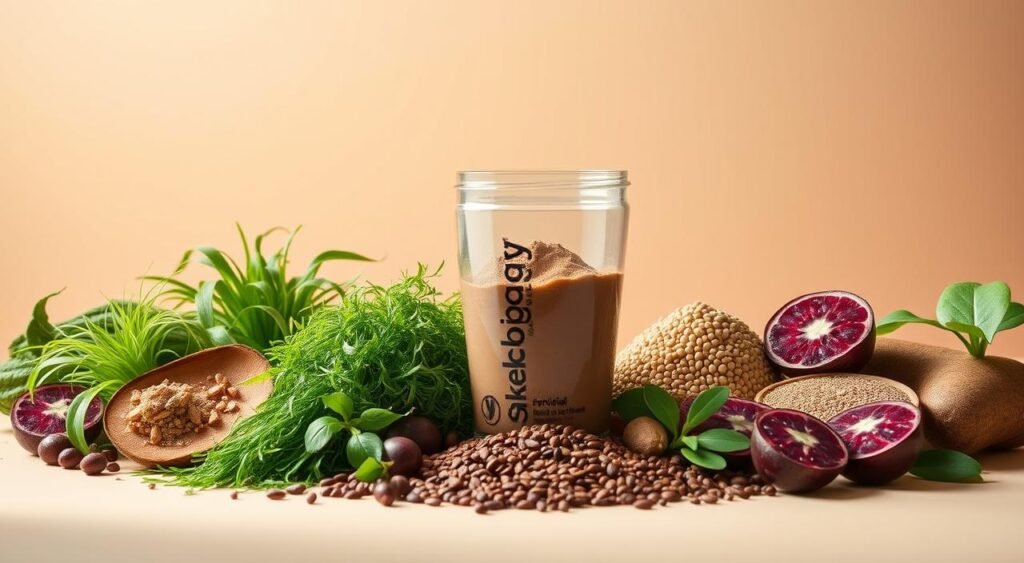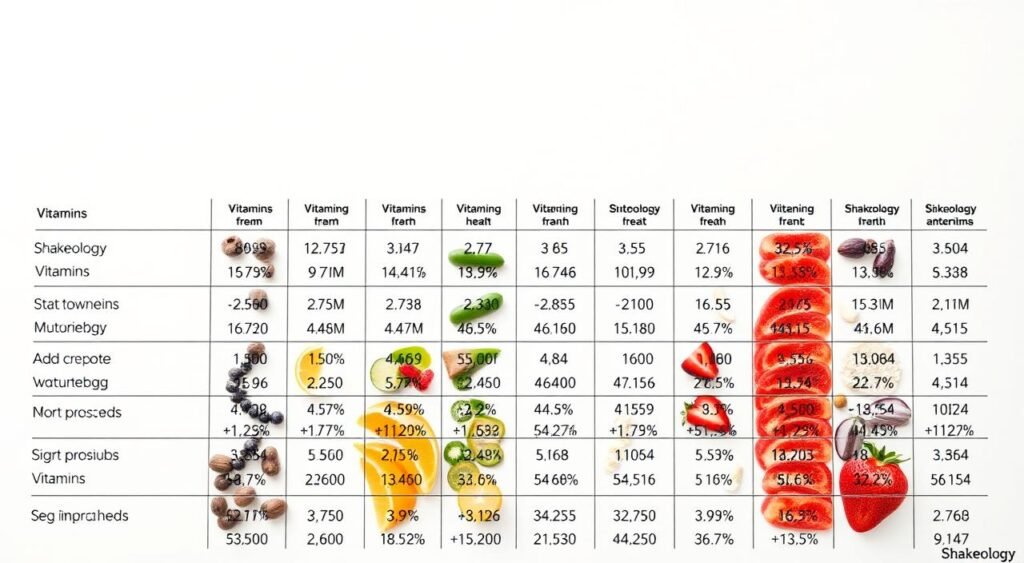In a world flooded with wellness trends, finding a protein shake that delivers on its promises can feel overwhelming. Shakeology, Beachbody’s flagship product, has sparked debates—with some praising its convenience and others questioning its value. Does it live up to the claims, or is it just another overpriced meal replacement?
With over 340,000 coaches promoting it through MLM tactics, skepticism is natural. A 2020 lawsuit even raised privacy concerns. Yet, beyond the marketing, what do clinical studies and everyday users say? This analysis cuts through the noise, comparing Shakeology’s ingredients to whole-food alternatives and breaking down its $129.95/month cost.
Key Takeaways
- Shakeology blends convenience with controversy—weighing pros and cons is key.
- MLM promotions and past legal issues add layers to consider.
- Clinical research and real-world results don’t always align.
- Cost per serving rivals fresh, nutrient-dense meals.
- Expert insights help separate science from sales pitches.
What Is Shakeology? A Comprehensive Overview
Behind the glossy ads, Shakeology’s journey reveals a mix of innovation and controversy. Developed in 2009 by Darin Olien and Beachbody, this protein shake promises more than nutrition—it’s a lifestyle product tied to a multi-level marketing empire.

The Origins and Marketing of Shakeology
Beachbody’s MLM model relies on 340,000+ coaches who earn commissions by selling products and recruiting others. Shakeology, their “hero product,” is often bundled with fitness programs like P90X. Yet, its marketing claims have faced scrutiny.
A 2017 $3.6M settlement addressed unsubstantiated health claims, while a 2020 lawsuit alleged unauthorized data sharing. Despite FDA compliance, Shakeology lacks third-party certification—a red flag for transparency.
How Shakeology Fits into Beachbody’s Ecosystem
As Beachbody’s top seller, Shakeology fuels its MLM engine. Coaches promote it as essential for fitness success, but critics highlight conflicts of interest. Compared to retail supplements, its $129.95/month cost raises questions about Shakeology worth.
- MLM Mechanics: Coaches must recruit to advance, creating pressure to oversell.
- Legal Shadows: Lawsuits reveal gaps between promises and practices.
- Cost Analysis: Pricier than whole-food alternatives or competitor shakes.
Shakeology Ingredients: What’s Inside the Blend?
Peeling back the label reveals what truly fuels Shakeology’s nutritional claims. The mix of protein, fiber, and adaptogens aims to stand out—but hidden details raise questions.

Protein Sources and Nutritional Profile
Each serving packs 17g of protein, blending whey and pea isolates. Whey offers complete amino acids, while pea protein caters to plant-based diets. Yet, the exact ratio isn’t disclosed.
With 6g of fiber from chicory root, digestion may improve—but IBS sufferers should caution. Chicory’s inulin can trigger bloating in sensitive individuals.
Superfoods, Adaptogens, and Digestive Enzymes
Ashwagandha and reishi mushrooms headline the adaptogen list, linked to stress relief. However, doses are hidden in proprietary blends, making efficacy hard to gauge.
The enzyme cocktail (lactase, alpha-amylase) may aid digestion, especially for lactose intolerance. But without clinical backing, these claims remain theoretical.
Added Sugar and Other Additives
At 7g total sugar (5g added), Shakeology skirts the USDA’s 10% daily limit. For comparison, a banana has 14g—but naturally occurring sugars.
- Transparency gaps: Proprietary blends mask ingredient amounts.
- Herb potency: Adaptogens like ashwagandha need specific doses to work.
- Enzyme benefits: Lactase helps, but whole foods offer similar enzymes.
Honest Shakeology Reviews and Real User Experiences
User testimonials reveal a split between convenience seekers and cost-conscious consumers. While some praise its energy levels boost, others report digestive discomfort or balk at the price. Here’s what people are saying—verified by data and expert analysis.

Why Some Swear By It: Energy and Convenience
A Beachbody-funded study found 58% of users experienced reduced cravings. Busy professionals often highlight the shake’s time-saving benefits:
- Pre-workout fuel: Many note sustained stamina during a day of workouts.
- Meal replacement: 72% of Amazon reviewers rate it 4+ stars for convenience.
- Flavor variety: Chocolate and vanilla dominate preferences, with tropical flavors lagging.
The Flip Side: Digestive Woes and Budget Strains
23% of surveyed users reported gas or bloating. Gastroenterologist Dr. Lisa Ganz explains:
“Chicory root’s inulin can ferment in the gut, causing discomfort—especially for IBS sufferers.”
Cost complaints also surface frequently. At $155 CAD/month, it’s pricier than grocery-store alternatives:
| Issue | % of Complaints | Expert Insight |
|---|---|---|
| Bloating | 23% | Linked to 6grams of chicory fiber |
| Cost | 41% | Equals 3–4 whole-food meals/day |
| Taste Fatigue | 18% | Dropout rates spike after 3 months |
Ultimately, Shakeology’s effects vary widely—proof that no single product fits all needs.
Does Shakeology Live Up to Its Health Claims?
Nutritional claims often sound too good to be true—but does science back them up? Shakeology’s promises span weight management, gut health, and sustained energy. Here’s how the evidence stacks up.

Weight Loss and Appetite Control
A 2018 Beachbody-funded study (n=50) suggested Shakeology curbed cravings, leading to 180 fewer calories consumed per meal. Yet, registered dietitian Maya Feller notes:
“Sustainable weight loss requires a 1,600–3,000 daily calorie deficit—no single product guarantees this.”
Compared to NIH research on long-term loss maintenance, Shakeology’s results lack independent replication.
Digestive Health and Energy Boosts
The shake’s 6g of fiber and probiotics aim to support digestion. However, its probiotic CFUs (colony-forming units) fall below clinical thresholds for measurable gut benefits.
Adaptogens like ashwagandha are dosed at 250–600mg in studies for stress relief—far higher than Shakeology’s undisclosed amounts.
The Lack of Independent Scientific Evidence
No peer-reviewed, long-term studies validate Shakeology’s broad claims. Tufts University’s 2022 analysis found most meal replacements overpromise micronutrient benefits.
The FDA issued warnings to Beachbody in 2017 for unsubstantiated claims—highlighting gaps between marketing and evidence.
- Transparency issues: Proprietary blends obscure ingredient potency.
- Cost vs. science: $129.95/month rivals whole-food meals with proven benefits.
- Expert consensus: RDs prioritize varied diets over reliance on shakes.
Shakeology’s Nutritional Value: Pros and Cons
Nutrition labels tell part of the story, but how does Shakeology measure up? This analysis breaks down its vitamins, protein quality, and how it compares to eating whole foods. We’ll examine what’s gained—and what’s lost—in processed nutrition.

Vitamins, Minerals, and Protein Content
Each serving delivers 28% DV vitamin C and 17g protein—equivalent to 3 eggs. The whey-pea protein blend offers high bioavailability, meaning your body absorbs it efficiently.
However, thermal processing may degrade heat-sensitive minerals. Registered dietitian Amanda Li notes:
“Synthetic vitamins often underperform compared to food-derived nutrients. The 6g fiber is good, but lacks the phytonutrients in whole broccoli.”
Key considerations:
- Micronutrient gaps: No vitamin K or choline, important for metabolism
- Protein quality: Whey scores high (PDCAAS=1.0), but pea protein is incomplete
- Fiber source: Chicory root may cause bloating unlike vegetable fiber
Comparing Shakeology to Whole Foods
At $5/serving, Shakeology costs 3× more than a homemade smoothie with similar nutrition. For example:
| Nutrient | Shakeology | Whole Food Equivalent |
|---|---|---|
| Protein | 17g | 3 eggs ($0.75) |
| Fiber | 6g | 1.5 cups broccoli ($0.80) |
| Vitamin C | 28% DV | 1 orange ($0.50) |
Whole foods provide antioxidants missing in processed products. For those prioritizing diet quality, fresh produce offers better nutrient synergy.
RD-approved alternatives include:
- Greek yogurt with berries and flaxseed
- Spinach-kale smoothies with almond butter
- Quinoa bowls with roasted vegetables
How Much Does Shakeology Cost? Is It Worth It?
The $130 question: Does Shakeology deliver enough value to match its premium price tag? With subscriptions rivaling car payments, understanding the true cost requires peeling back multiple financial layers.
Pricing Breakdown and Subscription Model
At $129.95 for 30 servings ($4.33/serving), Shakeology appears reasonably priced—until hidden fees emerge. Shipping adds $7.95-$10 per order, while a 14% restocking fee applies to returns. Four-sample trial packs cost $35.10 CAD ($8.75/serving), making experimentation expensive.
Beachbody’s auto-ship program has drawn legal scrutiny. A 2017 $3.5M settlement addressed unauthorized charges, as detailed in this independent Shakeology analysis. BBB complaints cite cancellation difficulties, with some users reporting continued billing for months.
| Cost Factor | Shakeology | Premier Protein |
|---|---|---|
| Price per serving | $4.33 | $1.50 |
| Protein per $1 | 3.9grams | 8.7grams |
| Annual cost | $1,559.40 | $540.00 |
Cost vs. Benefits Analysis
Registered dietitian Dr. Ellen Manning puts the price in perspective:
“At $5.17 per day with shipping, Shakeology costs more than a grocery-store lunch—without providing complete nutrition. The protein quality is good, but not unique.”
Key financial considerations:
- MLM markup: Retail competitors offer similar protein blends at 60% lower cost
- Opportunity cost: $1,559 annually could buy 104 lbs of organic chicken or 780 bananas
- Convenience premium: Meal kit services like Daily Harvest average $3.50/serving with whole-food ingredients
For those seeking alternatives, homemade smoothies with whey protein, frozen fruit, and spinach deliver comparable nutrition for under $2/serving. The true shakeology worth depends on whether the MLM ecosystem’s coaching support justifies the premium.
Potential Side Effects and Who Should Avoid Shakeology
While many praise its benefits, Shakeology isn’t risk-free—understanding potential effects helps consumers make informed choices. From digestive distress to allergen exposures, certain groups should proceed with caution.
Digestive Discomfort and Allergens
23% of people report bloating or gas, according to clinical surveys. Gastroenterologist Dr. Neil Patel explains:
“Chicory root’s inulin fiber ferments in the gut. For sensitive individuals, this can trigger IBS-like symptoms within hours of consumption.”
The whey-based versions contain milk allergens, posing risks for lactose intolerance. Key concerns:
- Enzymes like lactase may not fully counteract dairy proteins
- Methylsulfonylmethane (MSM) links to nausea in 12% of cases
- BBB complaints cite undisclosed soy traces in “vegan” blends
| Allergen | Shakeology | Competitor (Orgain) |
|---|---|---|
| Dairy | Yes (whey) | No |
| Soy | Trace amounts | Yes (isolate) |
| Gluten | No | No |
Precautions for Specific Health Conditions
Certain supplements interact dangerously with medications. The adaptogen blend raises red flags:
- Ashwagandha may amplify sedatives
- Reishi mushrooms lower blood pressure
- Herbs like holy basil affect thyroid hormones
ER physician Dr. Alicia Tan warns:
“We’ve treated patients for dizziness and hypotension after combining Shakeology with blood pressure meds. Always disclose all supplements to your doctor.”
High-risk groups include:
- Pregnant/breastfeeding women (no safety studies)
- Autoimmune patients (immune-stimulating herbs)
- Those on anticoagulants (vitamin K deficiency risk)
Alternatives to Shakeology: Better or Cheaper Options
Exploring alternatives to Shakeology reveals cost-effective options with comparable nutrition. Whether prioritizing budget or ingredients, consumers can choose between DIY blends and commercial products. Registered dietitian Maya Krampf notes:
“Homemade shakes often deliver superior nutrient density at 60% lower cost—if you’re willing to prep ingredients.”
Homemade Protein Shake Recipes
DIY blends avoid proprietary formulas while allowing customization. A basic template meets 80% of Shakeology’s protein needs:
- Base: 1 cup almond milk ($0.30)
- Protein: 2 tbsp pea powder ($0.60)
- Fiber: ½ banana + 1 tsp flaxseed ($0.45)
Total cost: $1.35/serving versus Shakeology’s $4.33. For probiotic benefits, add kefir (10B CFU) at $0.20/serving.
Other Commercial Meal Replacement Shakes
Retail competitors offer similar convenience without MLM markups. Independent comparisons highlight top performers:
| Brand | Cost/Serving | Protein (g) | Probiotics |
|---|---|---|---|
| Orgain Organic | $1.25 | 21 | 1B CFU |
| Garden of Life | $1.98 | 20 | 34B CFU |
| 310 Shake | $2.10 | 15 | 5B CFU |
Key advantages:
- Subscription flexibility: Cancel anytime vs Beachbody’s auto-ship
- Transparency: Full disclosure of adaptogen doses
- Taste variety: More options than Shakeology’s 5 flavors
Conclusion: Should You Try Shakeology?
Deciding whether this supplement fits your needs requires weighing science against lifestyle factors. For weight management, it may curb cravings short-term—but lacks independent research for sustained results.
Consider your body’s response: 23% report bloating from its fiber blend. At $130/month, cost rivals fresh meals with broader health benefits.
Evidence-based alternatives like DIY smoothies or retail protein shakes often deliver comparable nutrition at half the price. Registered dietitians emphasize whole foods as the foundation.
Final verdict? Only worth it if convenience outweighs cost and MLM pressures. For most, prioritizing varied, unprocessed foods proves smarter long-term.




